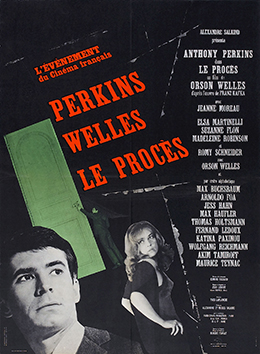 |
| Anthony Perkins and Geraldine Chaplin in Remember My Name |
Cast: Geraldine Chaplin, Anthony Perkins, Berry Berenson, Moses Gunn, Jeff Goldblum, Timothy Thonerson, Alfre Woodard, Marilyn Coleman, Jeffrey S. Perry, Alan Autry, Dennis Franz. Screenplay: Alan Rudolph. Cinematography: Tak Fujimoto. Film editing: William A. Sawyer, Tom Walls. Music: Kenneth Wannberg, Alberta Hunter (songs).
Casting Anthony Perkins as a construction worker sets up the kind of cognitive dissonance that permeates Alan Rudolph's Remember My Name, which has to be classified as a kind of screwball film noir. It was intended by Rudolph as an homage to the "women's pictures" of the '30s and '40s that starred Joan Crawford, Bette Davis, and Barbara Stanwyck and that peaked in the 1950s in the oeuvre of Douglas Sirk. Geraldine Chaplin plays Emily, who has just been released from prison where she served a term for killing her ex-husband's lover. Perkins plays the ex, now married to Barbara (Berry Berenson), and Emily is intent on stalking them and getting retribution. She manages to make their lives not exactly miserable, but certainly unsettled. It's a film full of offbeat characters, including Mr. Nudd, the young manager of the store where Emily gets a job. He's played by a very young and very skinny Jeff Goldblum. There are also memorable bits by Alfre Woodard as Emily's superior at the store and Moses Gunn as the security officer of the apartment complex where Emily lives. Both the store and the apartment house seem to be transition zones for ex-cons re-entering the world. Remember My Name teeters between the comic and the serious, with the balance tipped slightly toward the latter by the fact that it's set to a song score by the blues/jazz singer Alberta Hunter, whose contribution is one of the chief reasons, along with a great performance by Chaplin, for seeing the film.









.jpg)


